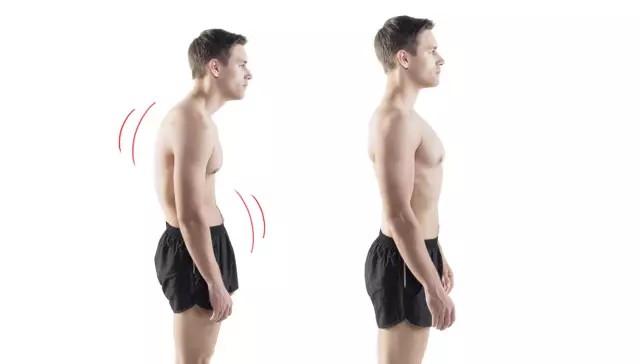- Author Curtis Blomfield [email protected].
- Public 2023-12-16 20:44.
- Last modified 2025-01-23 17:01.
Meningitis is a disease that occurs when a microbe (virus, bacterium, fungus), having overcome all protective barriers, enters the membrane that directly covers the brain and spinal cord. As a result, inflammation occurs in this place, threatening at any time, especially without treatment, to go directly to the tissue of the organs of the central nervous system, and also cause life-threatening consequences.

Meningitis, the first symptoms of which usually occur against the background of existing purulent diseases of the ear, nose, throat (especially if a person has a constant outflow of cerebrospinal fluid through the nose or ear), lungs, and also a few days after the onset characteristic of measles, chicken pox, rubella, acute respiratory infections, mumps, symptoms, can also develop as a primary disease, that is, one that occurs against the background of complete he alth without any previous phenomena. Sometimes the disease can complicate a herpes infection, shingles, infectious mononucleosis. In all these cases, the sooner adequatehelp in an infectious diseases hospital, the better the prognosis for life.
Meningitis: first symptoms in adults
The initial manifestations of this disease in adults are:
1) Headache - very intense, usually localized all over the head or in the temples and parietal areas, aggravated by sudden lifting of the head, moving to a vertical position, patients prefer to lie down because of it. This pain can also occur in the middle of the night and wake the person up.
2) An increase in body temperature is a mandatory sign of meningitis. If instead of a headache in rare cases there is back pain, then fever is a constant "companion" of this disease.
3) Nausea and vomiting - they do not depend on food intake, after them it does not get better. It is because of these symptoms that patients are most often mistaken for "poisoned", the headache is attributed to intoxication, and for some time the treatment is not carried out in the volume that is needed for meningitis.

4) Photophobia against the background of the first two signs may also indicate that this is meningitis.
5) Increased skin sensitivity - a normal touch becomes unpleasant for a person, he tries to protect himself from this.
6) The appearance of a dark star-shaped rash against the background of unchanged skin of the buttocks, legs, forearms, less often the trunk indicates that meningitis is developing here, the first symptoms of which may appear later or, in the case of a lightning-fast course, not appear at all. The very appearance of such spots is a reason for an immediate call for an ambulance.help, as the disease is deadly and will not go away on its own.
The first signs of meningitis in children under one year old
- Lethargy, drowsiness, sometimes it is even impossible to wake the baby.
- Unusual, inadequate behavior against the background of even slightly elevated body temperature (this may indicate that the child is hallucinating).
- Monotonous crying.
- The fontanel, which children under one year have, protrudes above the level of the bones (it should be at the same level with them and pulsate).
- The child does not calm down when held, on the contrary, screams even more.
- Fountain Vomiting.
- Refusal to eat.

- The rash, which is usually dark in color, star-shaped, coalescing, does not disappear when the skin is stretched.
- The child lies with his head thrown back and arched unnaturally.
- Convulsions due to low body temperature or even when it has already decreased by itself or under the influence of antipyretics.
Parents should be alert when any of these symptoms occur in the presence of fever.
If a doctor suspects a child or adult has meningitis, the first symptoms they look for are:
a) stiff neck muscles: in the supine position with maximum relaxation it is impossible to bend the neck so that the chin reaches the sternum;
b) in babies: if you take him under the armpits, he pulls his legs to his chest, it hurts when they are extended;
c) bent at the hip andknee joints, the leg cannot be extended at the knee (checked from both sides);
d) the leg is bent in two joints, if you try to straighten it at the knee, the second leg is bent (should be viewed from both sides).
If at least one symptom is positive, this is the basis for a lumbar puncture, because this is the only way to make a diagnosis of Meningitis.
First aid for meningitis
Should be provided at home and in the car by ambulance doctors, you just need to urgently call them. Before the arrival of the brigade, you need to try to provide the patient with peace, silence and semi-darkness. He is not allowed to get up, so it is necessary to provide a vessel or a diaper so that a person can go to the toilet lying down. You can drink, but also without getting up.
If nausea occurs, it is necessary to turn the patient's head to the side, especially if he is unconscious, so that he does not choke on his own vomit. In case of cramps, it is necessary to move the lower jaw around the corners so that the lower teeth are in front of the upper ones - this prevents the tongue from falling back and blocking the airways.






